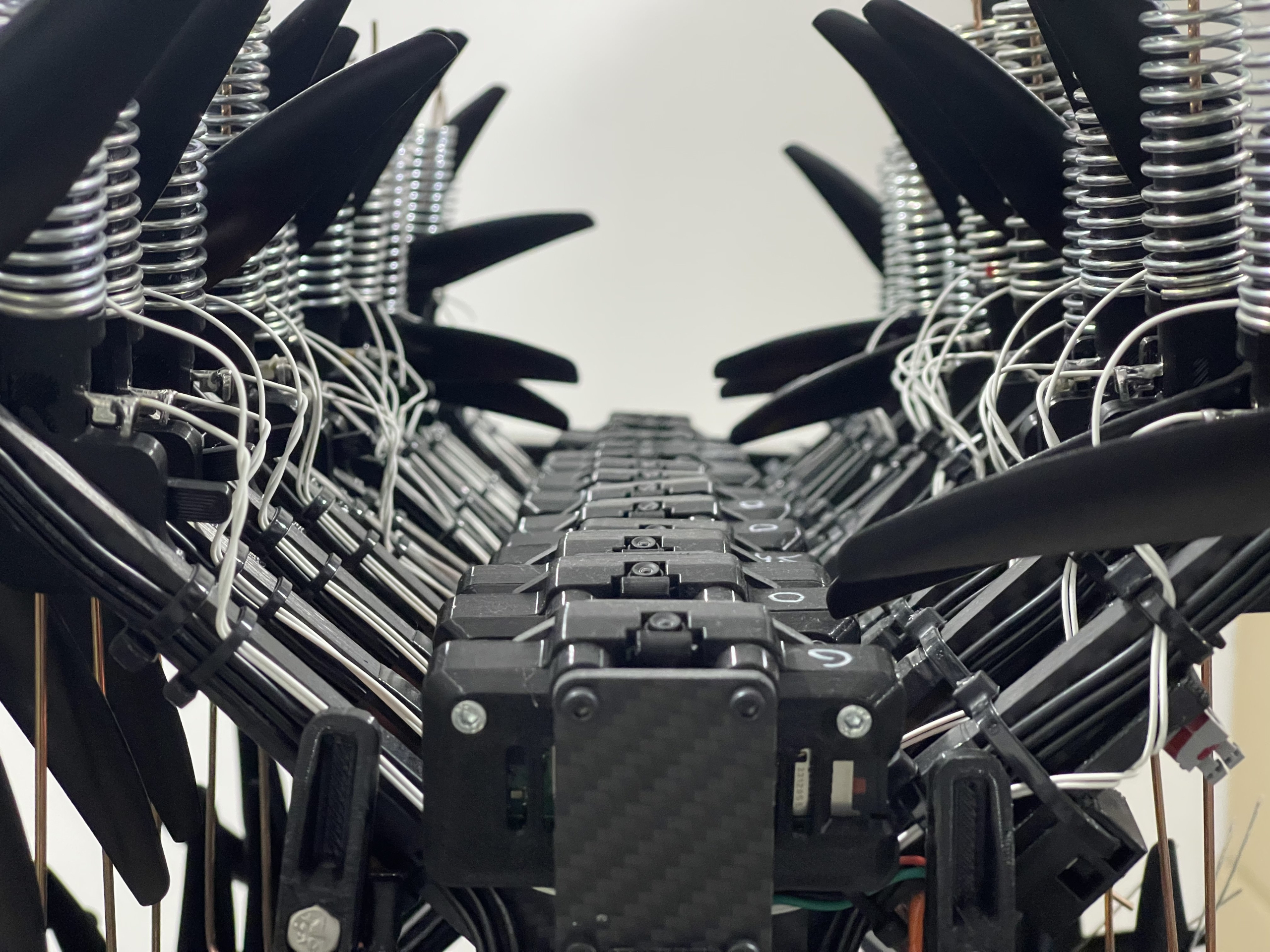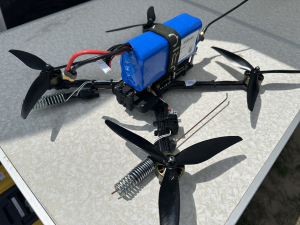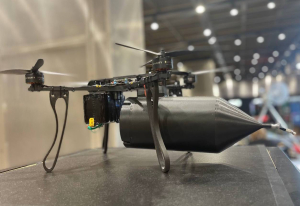Automatic targeting modules for drones are emerging as a key technology that will significantly improve the precision of strikes against both moving and stationary targets. VGI was among the first teams in Ukraine to introduce such a solution, which is already being actively used by Ukrainian Defense Forces pilots in real combat operations.
We spoke with the Chief Technology Officer of VGI to learn more about the current capabilities of the VGI guidance system, the key challenges in deploying such technologies, and how targeting systems are expected to evolve in the near future.
What are the key terms used to describe automatic target guidance systems, and how are they related to each other?
The key terms commonly used include: automatic target-tracking module, target guidance system, cruise control, and autopilot.
Government procurement agencies typically use the term “automatic target-tracking module”, while FPV drone manufacturers, military personnel, and other development teams often refer to it as a “target guidance system” or simply “guidance”.
These terms are often used interchangeably, but they have some important distinctions. An Automatic Target-Tracking Module (ATM) typically refers to the hardware-software unit installed on the drone. In contrast, a target guidance system includes the full suite of software components that enable automatic tracking and engagement of a selected target. This may involve image processing algorithms, flight stabilization tools, and a user interface for control. The term “autopilot” is technically inaccurate in this context, as the system does not perform full autonomous flight. Instead, it focuses specifically on automatically guiding the drone toward a selected target.
In general, government procurement officials tend to use the term “Automatic Target-Tracking Module”, referring to a standalone component integrated into a drone to enable automatic target tracking.
Meanwhile, military personnel, FPV drone manufacturers, and volunteer developers more commonly use the term “target guidance system”, as it encompasses more than just the hardware module. It also includes the control algorithms, drone integration, and adaptations necessary for use in real combat conditions.
When it comes to your development, is the VGI-9 automatic targeting system a software or a hardware-software solution?
We develop software that is installed on a hardware platform (microcomputer). We do not manufacture the hardware ourselves, but instead use readily available components from multiple suppliers.
The VGI-9 development model is based on the integration of software with accessible hardware platforms, offering several key advantages:
Scalability and Independence.
Since VGI-9 works with available microcomputers, production does not depend on component shortages or a single supplier. This allows the system to be quickly adapted to various FPV platforms and ensures uninterrupted supply.
Technological Flexibility.
By separating the software from the hardware, system updates and improvements can be implemented without changing the hardware. This provides military forces and FPV drone manufacturers with access to the latest solutions without additional costs.
Cost-Effectiveness.
Using off-the-shelf hardware solutions reduces production costs and simplifies system integration into existing FPV platforms without the need for complex technical adjustments.
This approach ensures that VGI-9 offers high efficiency, adaptability, and reliability in combat applications.
What are the key characteristics you consider most important when selecting an automatic targeting system? What characteristics can we highlight in the case of the VGI-9 solution?
There are several key characteristics to consider when comparing and choosing such systems. These are quite universal and require practical testing. These include image quality, protection against unauthorized access, the system’s ability to function in challenging weather conditions, and the capability to work with drones of various weights and configurations.
In the case of VGI-9, we focus on the following parameters of our system:
Video Quality and Frame Rate (at least 40 frames per second)
High video quality and smooth image display are critical for effective drone control and target tracking. Low video latency and high frame rates allow operators to quickly respond to changes in the drone’s position and target, improving targeting accuracy.
Protection Against Unauthorized Access
Ensuring system security and protection against hacking is crucial, especially for military applications. Encryption, authorization, and other security measures are vital to prevent control of the drone from being intercepted.
Resilience to Harsh Weather Conditions (wind, rain, fog)
The ability of the system to operate effectively in various weather conditions significantly expands its operational range. In the case of VGI-9, we have developed and are continually improving algorithms to compensate for the effects of wind. This also includes the system’s ability to work with drones of varying weight and size without compromising performance.
Versatility and Adaptability
The system’s versatility and adaptability to various platforms is a significant advantage, as it allows a single solution to be used on drones of different sizes and configurations.
Therefore, the key factors when selecting an automatic targeting system are video quality, security, weather resilience, and versatility. These characteristics determine the system’s effectiveness, reliability, and flexibility in real combat conditions.
How does the VGI-9 targeting system work? Does it help the pilot identify the target, or is it just about locking on and tracking?
From a technological standpoint, the VGI-9 system uses computer vision. In our case, the FPV drone operator manually identifies the target, moves the cursor over it, and the system then locks onto and tracks that selected target.
To put it simply, our system works by analyzing pixels—essentially processing the video feed in real time and locking focus on a specific area selected by the operator.
This means that VGI-9 relies on the operator to choose the target, while the system handles the locking and tracking — it does not perform autonomous detection or recognition of targets.
This approach helps avoid the challenges of misidentifying camouflaged or irregular targets, which can be a problem in fully automated systems. As a result, VGI-9 offers greater reliability and adaptability in real-world combat scenarios, while still requiring the operator to designate the target.
How do you assess the adoption level of automatic target-tracking technology in the Ukrainian drone market?
The situation is evolving rapidly, and any numbers we mention today could look completely different tomorrow.
That said, there’s a clear trend: more and more drones are being equipped with integrated target-tracking systems. In fact, we anticipate that in the near future, having such a system could become a standard requirement for drone procurement.
As of February 2025, our estimates suggest that around 5–10% of drones produced in Ukraine are equipped with automatic target-tracking systems. Given that the total monthly production of drones in Ukraine is around 100,000 to 150,000 units, this means that 10,000 to 15,000 drones equipped with such systems are being delivered to the military every month.
Interestingly, the widespread adoption of target-tracking systems has been somewhat hindered by the military’s negative experience. In late 2023 and early 2024, a large number of teams rushed to present their solutions — many of which were still underdeveloped or raw. Frankly speaking, a number of startups showcased products that were not ready to be considered final, operational solutions, which led to skepticism and cautiousness on the part of military users.
Today, the landscape is gradually improving. A number of high-quality, reliable solutions have emerged on the market, gaining recognition and trust within both military and volunteer communities. While the adoption of this technology may not be accelerating as quickly as anticipated, it is steadily gaining traction, particularly among defense and security forces seeking to enhance the precision and effectiveness of drone operations.
What are the main limitations of using automatic targeting systems in real combat conditions? What factors can reduce their effectiveness?
The biggest limitation in real combat situations is weather. Conditions like fog, rain, or strong wind can seriously affect video quality, which in turn reduces the distance at which targets can be detected and locked onto. It’s also important to remember that camera hardware itself has limitations under these conditions.
There are also technical constraints that apply to all such systems. For example, with the VGI-9, the effective range for target acquisition is between 100 meters and 2 kilometers, and the ideal altitude for tracking is between 20 and 250 meters—more than sufficient for engaging ground targets.
While the system is designed to be intuitive and user-friendly, it does require a minimal level of operational familiarity to maximize its performance in combat environments.
Does a pilot’s skill level affect how well the system performs? How long does it take to learn?
Our main goal was to make the system as intuitive and user-friendly as possible. The VGI-9 team simplified both the interface and control logic so that pilots can start using it right away—no extra training required. In fact, the flying experience remains exactly the same. Pilots operate the drone just as they did before.
To lock onto a target, the operator moves the cursor over it and presses one button — “Lock Target”. From that moment on, the system takes control, automatically tracking the target. The pilot can even take his hands off the controls.
Switching to “cruise control” is just as simple—one more button press, and that’s it. The entire system operates with just two easy commands.
Unlike other systems that require manual setup — like entering drone weight, frame size, or adjusting image contrast — VGI-9 handles all of that automatically. The operator doesn’t need to configure anything.
That said, even with its simplicity, there is still a short adjustment period. To ensure this learning doesn’t happen under combat stress, we’ve partnered with the National FPV Drone School Association. Together, we’ve developed a virtual training simulator, which we provide to schools for free. This allows military personnel to train in a safe, simulated environment before moving on to live missions.
How do you view the competition in the automatic guidance systems market? Are there major differences in price and performance between various solutions?
Right now, the market is still taking shape, but there are already a few teams that could be considered frontrunners.
Most guidance systems operate on a similar “lock and strike” principle. However, in real-world or near-combat testing conditions, they can differ significantly in terms of accuracy, and that’s where the fundamental distinctions become clear.
It’s also worth noting that while many guidance systems are available, only a small number of companies offer fully integrated, end-to-end solutions that include hardware, software, licensing, simulation tools, and comprehensive user documentation. Our offering is among this select group.
In terms of pricing, solutions currently range from $70 to $250 per module, depending on the hardware platform. The price differences mainly come down to the components and tech built into each system.
Do you plan to expand the functionality of your systems in the future? What new features would you like to add?
Improving automatic guidance systems isn’t just about advancing technology — it’s about responding to the real challenges of modern warfare. As the Technical Director, my team and I constantly study how the VGI-9 performs in the field, using direct feedback from military operators. That real-world experience drives the direction of our development, helping us adapt the system to actual combat conditions.
We combine practical field knowledge with the latest research in machine vision, smart guidance algorithms, and tools that help the system resist interference. Every upgrade is thoroughly tested in near-combat environments to make sure it works reliably when it matters most.
For security reasons, we can’t reveal the exact details of upcoming updates. But I can say this: our engineers are fully focused on making sure the VGI-9 stays a step ahead. We’re doing everything we can to ensure the system completes missions effectively, adapts to emerging threats, and remains a powerful tool for defeating the enemy.
What are the prospects for the development of automatic drone targeting technologies in the near future? And overall, how close are we to achieving full battlefield autonomy?
We believe that in the next few years, this technology will become more widely used by the Ukrainian military. It can greatly improve the accuracy and effectiveness of drones. That said, creating fully autonomous systems that can detect, identify (whether it’s a friend or enemy, or if a target has already been hit), and strike targets is still a tough technical challenge. It takes many rounds of training, testing, improvements, and — most importantly — real-world combat trials.
We expect that over the next few years, automatic guidance systems will be integrated into digital platforms, enabling drones to use GPS-based targeting alongside live visual tracking. We also expect the rollout of fully autonomous acquisition and engagement capabilities against airborne targets, further broadening their combat roles.
Another major focus will be extending the range at which drones can detect and engage camouflaged targets, making them far more effective in challenging settings like urban environments, forests, or rugged terrain. Thanks to these upgrades, guidance systems will give FPV drones greater autonomy, precision, and overall effectiveness in modern combat operations.
Contact us to get detailed information about the VGI-9 drone guidance system.
Follow our updates on social media and YouTube – there you will find:
✅ Exclusive materials on the development, testing, and combat use.
✅ Useful analytical content on the war and the role of FPV drones in modern combat operations.
✅ The latest news and insights from the world of military technologies.
📌 Join us:
🔗 YouTube: VGI-9 on YouTube
📸 Instagram: We are on Instagram
🎯 TikTok: We are on TikTok







